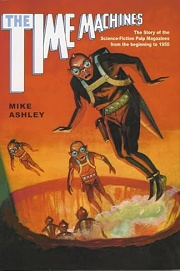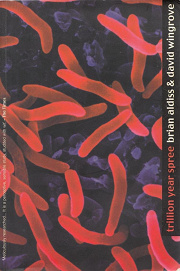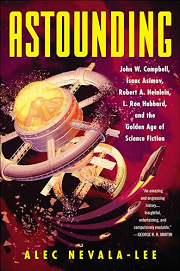Share your thoughts in a quick Shelf Talk!
Time Machines: The Story of the Science-Fiction Pulp Magazines from the Beginning to 1950 by Mike Ashley
Enter the roaring age of rockets, ray guns, and lurid covers. Time Machines: The Story of the Science-Fiction Pulp Magazines from the Beginning to 1950 uncovers the editors, authors, and wild ideas that shaped the genre’s earliest golden dreams.
Have you read this book? Share what you liked (or didn’t), and we’ll use your answers to recommend your next favorite read!
Love Time Machines: The Story of the Science-Fiction Pulp Magazines from the Beginning to 1950 but not sure what to read next?
These picks are popular with readers who enjoyed this book. Complete a quick Shelf Talk to get recommendations made just for you! Warning: possible spoilers for Time Machines: The Story of the Science-Fiction Pulp Magazines from the Beginning to 1950 below.
In Time Machines: The Story of the Science-Fiction Pulp Magazines from the Beginning to 1950, did you enjoy ...
... a sweeping, decade-by-decade history of SF from Gernsback’s Amazing Stories through Campbell’s Astounding and beyond 1950?
Trillion Year Spree: The History of Science Fiction by Brian W. Aldiss and David Wingrove
If what hooked you in Time Machines was tracing the arc from Hugo Gernsback launching Amazing Stories in 1926 to John W. Campbell remaking Astounding by 1938, you’ll love how Trillion Year Spree zooms out to map that same journey across the whole field. It connects the dots between the pulp boom, the rise of Unknown, the challenges at Weird Tales under Farnsworth Wright, and the postwar shift that Ashley tees up—then carries you forward to show the long-tail impact of those magazines on later writers and movements.
... deep, behind-the-scenes analysis of Campbell’s editorial reign and the Golden Age you saw take shape in Astounding?
Astounding: John W. Campbell, Isaac Asimov, Robert A. Heinlein, L. Ron Hubbard, and the Golden Age of Science Fiction by Alec Nevala-Lee
Loved Ashley’s chapters on Campbell’s takeover of Astounding and the magazine’s transformation in the late ’30s? Astounding gives you a close-up: Campbell’s methods, his clashes with writers, and how stories like Asimov’s early robot tales and Heinlein’s breakout pieces were shaped at the editorial desk. It also digs into controversies Ashley flags—editorial ideology, scientific evangelism, and how that alchemy forged (and sometimes distorted) the Golden Age.
... profile-driven snapshots of pulp-era writers and editors like those who populated Amazing, Astounding, Unknown, and Weird Tales?
Seekers of Tomorrow: Masters of Modern Science Fiction by Sam Moskowitz
If you enjoyed the bite-sized magazine histories and author cameos—Gernsback championing gadget stories, Farnsworth Wright balancing Weird Tales’ stable, or Campbell cultivating Asimov and van Vogt—Moskowitz’s essay-portraits deliver that same mosaic, one focused profile at a time. You’ll get vivid, standalone chapters on the figures Ashley threads through the pulp years, perfect for dipping in and out like flipping through an issue rack.
... a primary-source-rich chronicle of early fandom through letters, fanzine clips, and firsthand documents you glimpsed around the pulp magazines?
The Immortal Storm: A History of Science Fiction Fandom by Sam Moskowitz
Ashley quotes fanzines and correspondence to show how readers and editors—from the lettercols of Amazing to the fan skirmishes surrounding Astounding—shaped the field. The Immortal Storm plunges into those raw sources: feuds recorded in mimeographed zines, club minutes, and letters that illuminate the culture swirling around the pulps, including the fallout from stunts like the ‘Shaver Mystery’ era at Amazing.
... the ideological feuds, expulsions, and power plays in NYC fandom and pro circles that paralleled editorial battles at Astounding and Amazing?
The Futurians by Damon Knight
If the editorial tug-of-war you saw—Campbell’s hard-science push at Astounding, Gernsback’s market-savvy moves, Ziff-Davis steering Amazing—fascinated you, Knight’s inside account of the Futurians delivers the human drama behind it. You’ll read about Donald Wollheim, Frederik Pohl, and others navigating factional splits, convention bans, and publishing coups—all the behind-closed-doors maneuvering that shaped who got published where in the pulp and immediate post-pulp years.
Unlock your personalized book recommendations! Just take a quick Shelf Talk for Time Machines: The Story of the Science-Fiction Pulp Magazines from the Beginning to 1950 by Mike Ashley. It’s only a few questions and takes less than a minute.





